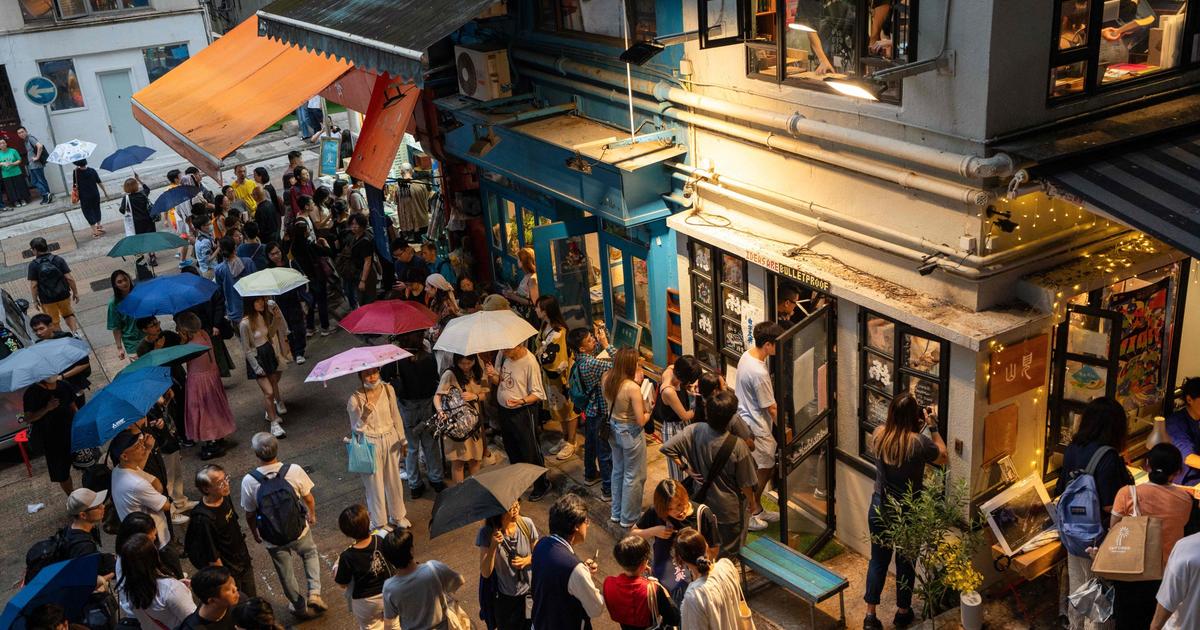weekly
Written by: Lin Jiaqi
2019-11-20 18:04
Last updated date: 2019-11-20 18:04Of the 1,444 historical buildings and new projects, 37 buildings have been demolished, including one Grade I historic building, seven Grade II or proposed Grade II historic buildings, and 29 Class III or proposed three Grade historic building.
The dismantled first-class historic building is the Hedong Garden, built in 1927. It was originally located at the top of the road in Gotham Hill. It was once listed as a tentative monument. It is very different from the scenic spot on the top of Stubbs Road, which was avoided in 2008. fate.
"The story will disappear. My impression is that Hong Kong has disappeared a lot of story-telling buildings. If you take down a building, it will destroy a story." Zhong Baoxian, a former member of the Consultative Committee, said.
Undertake the above .. [Historical conservation. A] From the excavation to the disappearance of those Hong Kong stories buried in the bricks and tiles
He Dong Garden, once rated as a first-class monument, could not escape the dismantling under the insistence of the original owner. (photo by Li Zezhen)
When everyone talks about Jing Xianli, they all think that the government is "changing the land" and doing something, but when asked about the insider, another answer is obtained. As early as 2004, the owner of Jingxianli intended to sell the property bidding. The Changchun Society launched the "one person, one yuan" campaign, hoping to buy the big house conservation and asked the government to list it as a legal monument. The matter was discussed at the meeting of the ancient consultation, but after the owner canceled the tender, things were put down again. Until July 2007, the owners resold the property, and the new owner began to demolish the mansion two months later. The government rushed to cite the regulations and listed Jingxianli as a tentative monument to stop the demolition project. In the following year, the government announced that Jingxianli was a statutory monument and exchanged land with the owner to exchange the same area of land next to the mansion for the mansion and the entire Jingxianli land.
Li Shaowen recalled that it was only "good color" at the time - it happened to see the workers encircling the bamboo planks, the glazed tile roof of the mansion and the red brick exterior wall. She immediately took photos to the familiar media, and the report caused widespread public discussion. Forcing the government to list it as a tentative monument. The whole process dragged the load until the bulldozer entered the mansion and began to remove the roof, and the government rushed to respond.
Both are privately owned properties. Why is He Dong Garden demolished, and Jing Xianli can finally stay? One of the main reasons is that Ho Tung Garden is only a Grade I building and King Yin Lei is a statutory monument. The statutory protection only applies to statutory monuments and tentative monuments protected by regulations. The rest of the ratings are not.
Jing Xianli successfully left, but due to the delay in the activation plan, it has not yet been fully opened to the outside world. (Photo by Huang Yongjun)
Why should we wait for someone to care?
The good fortune of Jing Xianli is partly due to the consensus between the owners and the government. It is obvious that the government does not dare to touch private historical buildings at will, avoiding huge compensation and facing long-term legal proceedings. Therefore, it is ultimately up to the owners to agree to change places. But this situation is rare in Hong Kong. However, even if Mong Kok Lei Shengchun was the owner's initiative to contact the government for donation, the whole process took nearly three years.
"We need to review the policy of conserving private historic buildings, including the development of more specific mechanisms and guidelines on the extent and manner of public resource use, and whether we need to enhance the conservation of privately owned historic buildings through urban planning." The Policy Address proposes the above proposals for heritage conservation, especially for private property history buildings. Later, the Consultation Committee invited the government to assist in reviewing the historical building conservation policy and invited consultants to study relevant policies.
After consulting the consultant's report, the GUAC completed the "Report on the Review of Historic Building Conservation Policy", which is similar to the review of the Heritage Protection Policy in 2004. The report suggested that the long-term study should give legal status to the current rating system, but until now "Only hear the stairs." Next year, the General Counseling Association will hold a brainstorming meeting to review the rating strategy. Will it bring about a new change?
(Hong Kong 01 Cartography)
Different from our generation's emphasis on development, (our generation) thinks that matter is very important and feels that everything must be removed. It is necessary to build more shopping malls and high-rise buildings to improve the quality of life. When the surrounding area becomes a shopping mall, the surroundings all become the same, not what the younger generation wants to see.
I saw a building with stories in it, and built a towering commercial building in place. Zhong Baoxian took the initiative to mention that the young people who had been trying to preserve Queens Wharf and Caiyuan Village in the past year were more and more concerned about social conservation issues. Looking for another kind of value, it is a choice of life and a view of social fairness. Unlike our generation that values development first, (our generation) thinks that matter is very important, feels that everything must be removed, and build a little more. Shopping malls and high-rise buildings are going to improve the quality of life. When the surrounding areas become shopping malls, the surrounding areas all become the same, not what the younger generation wants to see."
However, in recent years, the story of this city has been more and more people have discovered, but the historical buildings that will be sacrificed under the development of the giant ship have still not been left behind. "Hong Kong is a commercial society. We have no way to take away the property rights of others. Foreign countries have a heritage trust to acquire and preserve historic buildings. But in Hong Kong, it is very expensive to buy historic buildings. Imagine a trust fund. How many big ones should there be? The society should balance the use of public funds. Should public funds be used for welfare or medical expenses for the elderly? The current Weixin Trust Fund can only be repaired and can only be studied."
Who wiped out the small things in Hong Kong?
There are too many stories in Hong Kong and too few people to discover stories.
In the eyes of Zhong Baoxian, history is the root of the people. Feelings of the city, whether you feel that you are part of the city, whether you understand the story of the city.
Like the Tin Hau Temple in Aberdeen, it is generally said that fishermen raise money to build and hope that the Queen Mother will bless the sea and catch a good harvest. Zhong Baoxian repeatedly interviewed the water people, read many old newspapers, and found that the Tianhou Temple in Sok Kwu Wan, which is not far away, was the temple for the "real" fishermen. The Tin Hau Temple in Aberdeen is a land-based person and can be known from the name on the donation. At that time, fishermen using wooden boats would sail from Aberdeen Wharf to Po Toi Island with the wind. Sok Kwu Wan is a stopover. The fishermen will be reimbursed and will also pay homage to the Queen. Every year, the Aberdeen Tin Hau Temple's birthday is celebrated. Everyone will carry the Tianhou as a parade along the main road, but the Sok Kwu Wan is not. The fishermen climb the dragon boat in front of the temple to see the queen.
Hong Kong's history and culture are diverse, even if it is the Tin Hau Temple, there are completely different stories. (Photo by Yang Qing)
"If we do it slowly, the story will gradually disappear. These stories are all read by the newspaper, or chat with the floating people who are not good at writing. Hong Kong people come from all directions, everyone has their own story. Some people have more resources in their hands to protect their stories and let relevant historical stories enter the government's archives," said Zhong Baoxian.
The story will disappear. My impression is that Hong Kong has disappeared a lot of storytelling buildings. When you take down a building, you destroy a story.
The Royal Capital Theatre was officially applied for a strong shot last year. It will remain or become another commercial building. It is still unknown.
In 2008, the Government launched the "Historical Partner Revitalization Scheme" to invite non-profit-making social enterprises to undertake the historic buildings of the Government, renovate and revitalize them into valuable cultural landmarks. The first batch of revitalization project, the Fangyuan Bookstore, opened for four years, but it was closed due to lack of people.
related articles︰
[Historical conservation. Shang] Lin Zheng’s childcare transcript is a political achievement or a dereliction of duty?
[Historical conservation. Next] Everything is cost-effective? How does business and culture coexist?
[Kwun Tong reconstruction. On the lack of resources, the road is difficult to protect the warriors: take the government's interests will be heard
[Kwun Tong reconstruction. Next] Childcare is lost? Conservation Warrior Sighs Square, do not talk about money, talk about placement
Excerpted from the 189th issue of "Hong Kong 01" Weekly (November 18, 2019) "Where is the story of Hong Kong buried between bricks and tiles?"
More weekly articles.. [01 Weekly Page]
The "Hong Kong 01" weekly newspaper is available at major bookstands, OK convenience stores and Vango convenience stores. You can also subscribe to the weekly newspaper to read more in-depth reports.
Statutory monuments, ancient consultations, historic sites, Jingxianli Grand Museum, in-depth report, 01 weekly report


/cloudfront-eu-central-1.images.arcpublishing.com/prisa/3I74UEXLYRBBRPGPSGWNN6WXH4.jpg)









